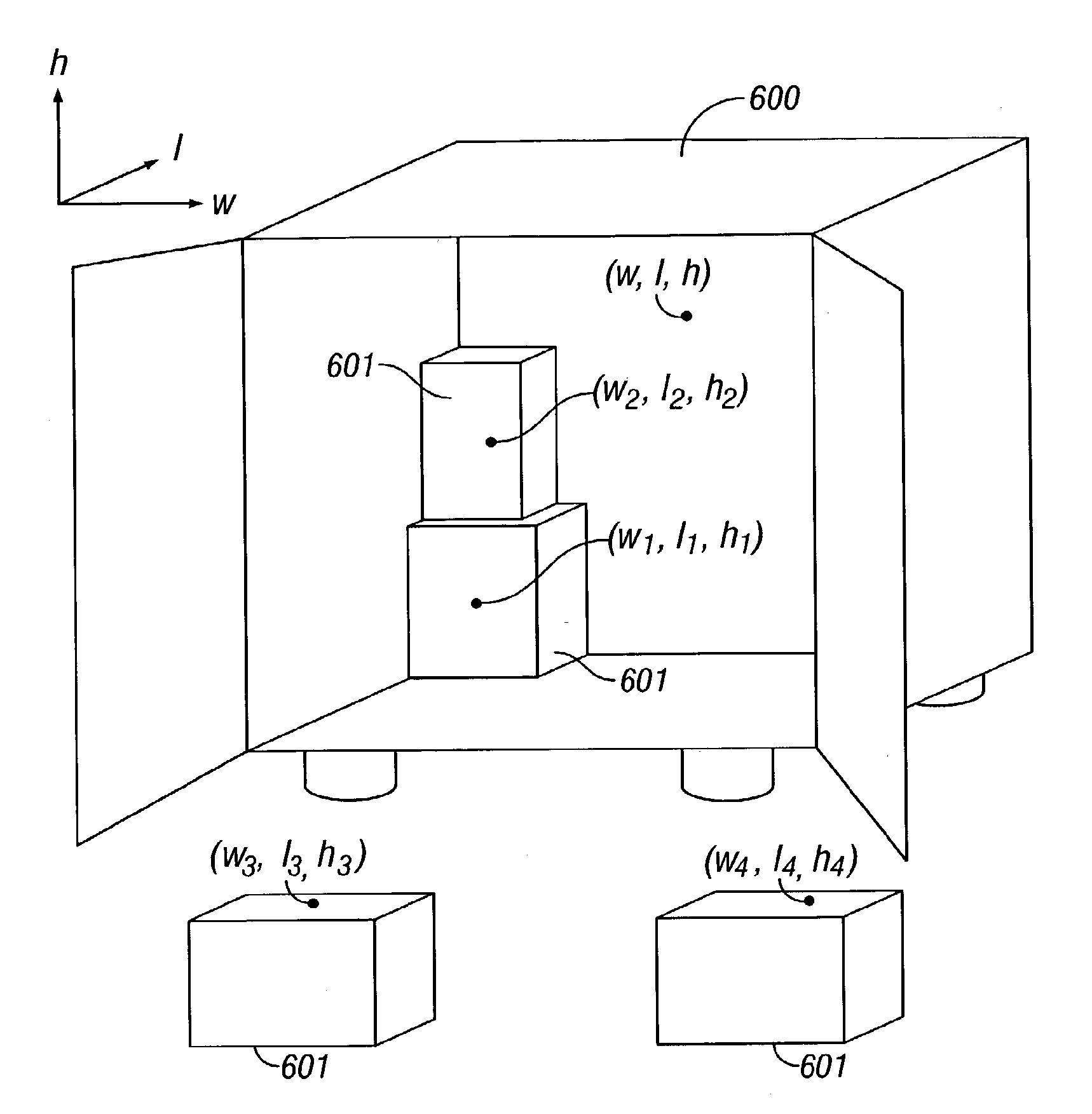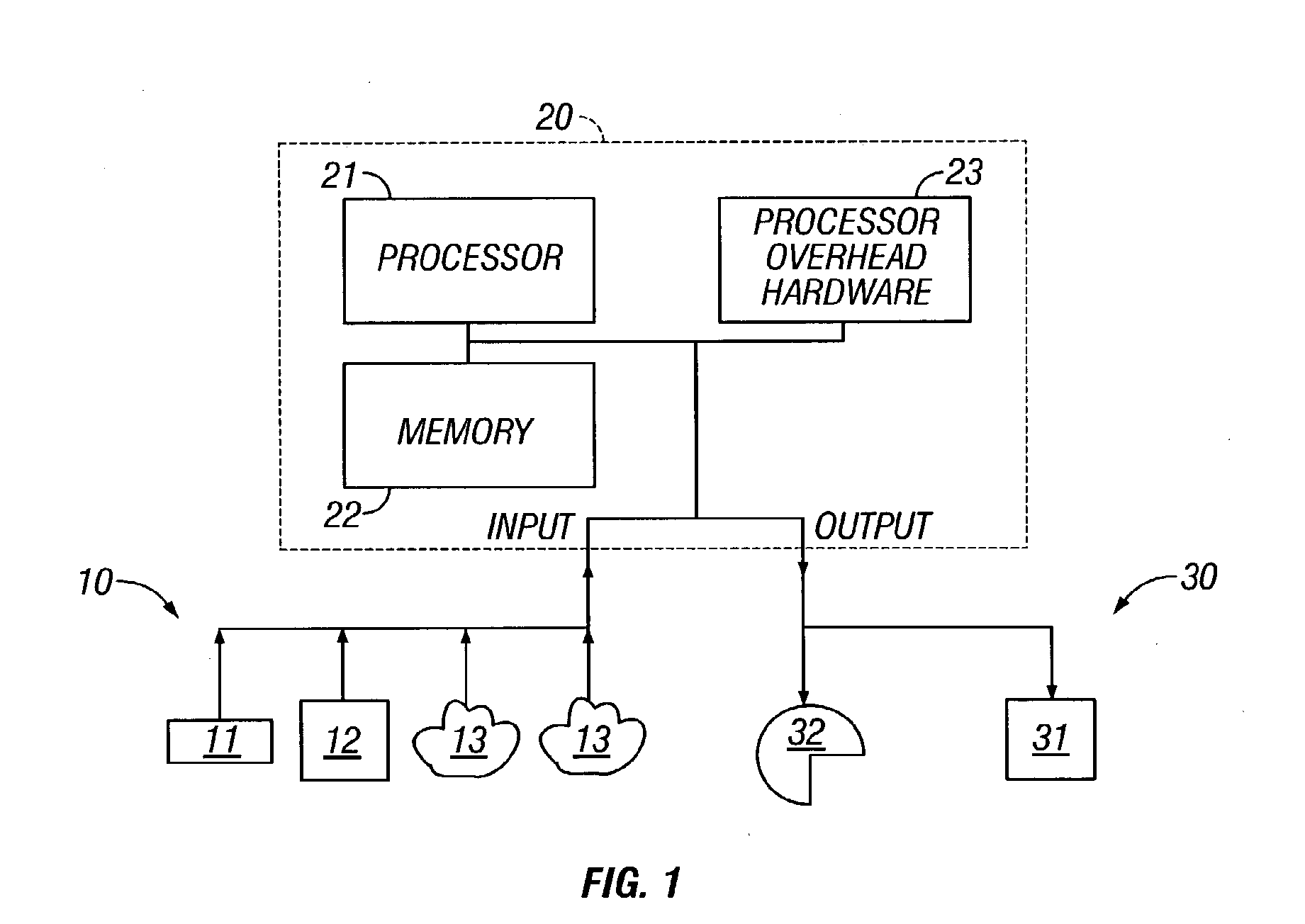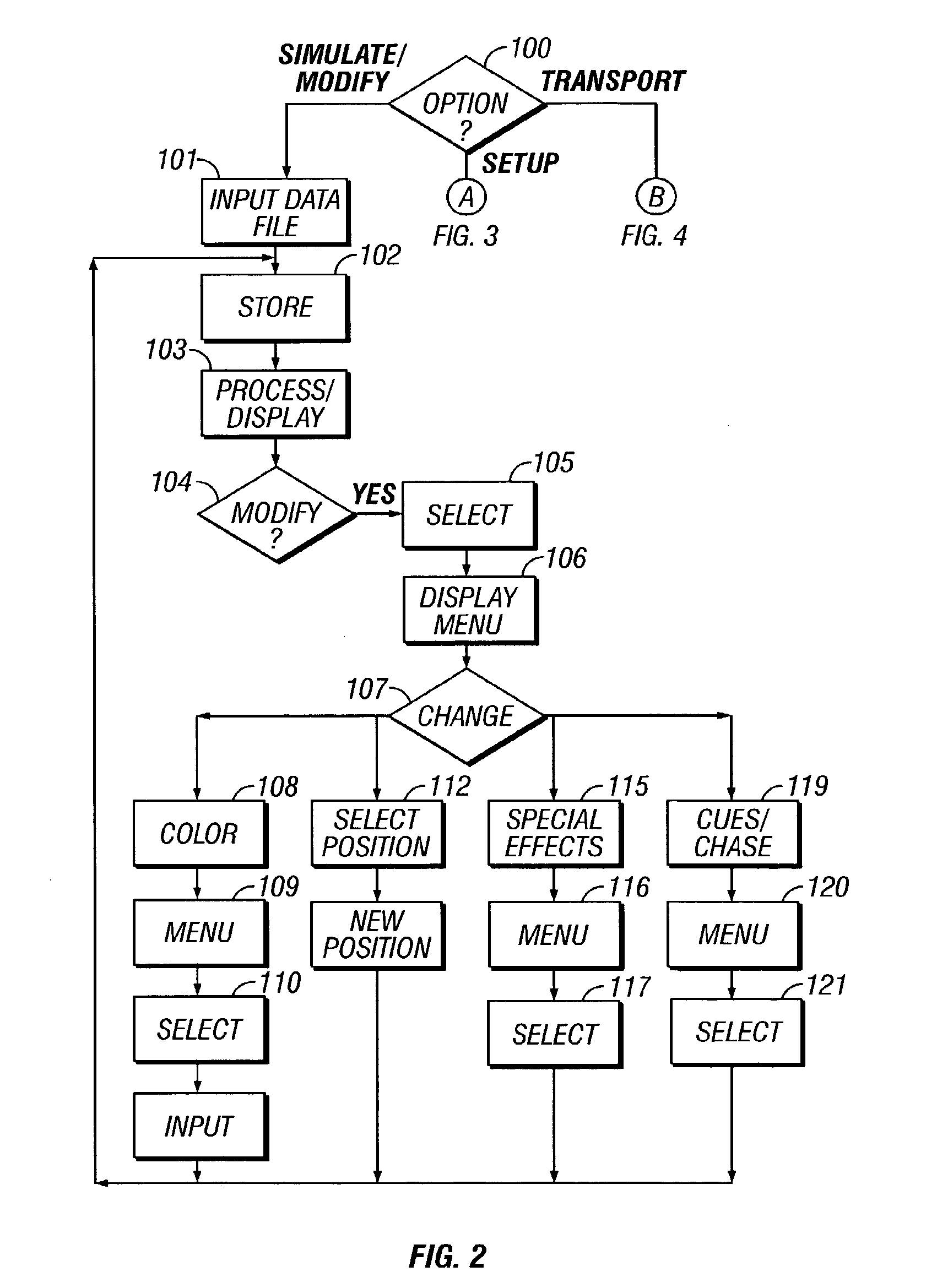Virtual Reality Interface for Show Control
a virtual reality and interface technology, applied in the field of virtual reality control, can solve the problems of complex production of modern stage performances, limited system, and disorganized techniques for planning operation
- Summary
- Abstract
- Description
- Claims
- Application Information
AI Technical Summary
Benefits of technology
Problems solved by technology
Method used
Image
Examples
Embodiment Construction
[0046]FIG. 1 shows a block diagram of the overall architecture of a preferred embodiment of the virtual reality lighting and sound production design system forming the present invention. This embodiment includes data input devices 10, a processing subsystem 20, and display devices 30.
[0047]The system uses two different kinds of data: database information which is prestored and fixed, and user-input data. The database information includes information that is used by the system to carry out the simulation. This includes, for example, the sizes of the lighting fixtures and their weights, their lighting characteristics, and other information as explained throughout this specification. Site-specific information may also be stored to explain the characteristics of the site that is being lit. This site-specific information includes the sizes of the lighted area, information indicative of its structures and hookup. Data regarding the characteristics of the stage and light fixtures is entere...
PUM
 Login to View More
Login to View More Abstract
Description
Claims
Application Information
 Login to View More
Login to View More - R&D
- Intellectual Property
- Life Sciences
- Materials
- Tech Scout
- Unparalleled Data Quality
- Higher Quality Content
- 60% Fewer Hallucinations
Browse by: Latest US Patents, China's latest patents, Technical Efficacy Thesaurus, Application Domain, Technology Topic, Popular Technical Reports.
© 2025 PatSnap. All rights reserved.Legal|Privacy policy|Modern Slavery Act Transparency Statement|Sitemap|About US| Contact US: help@patsnap.com



